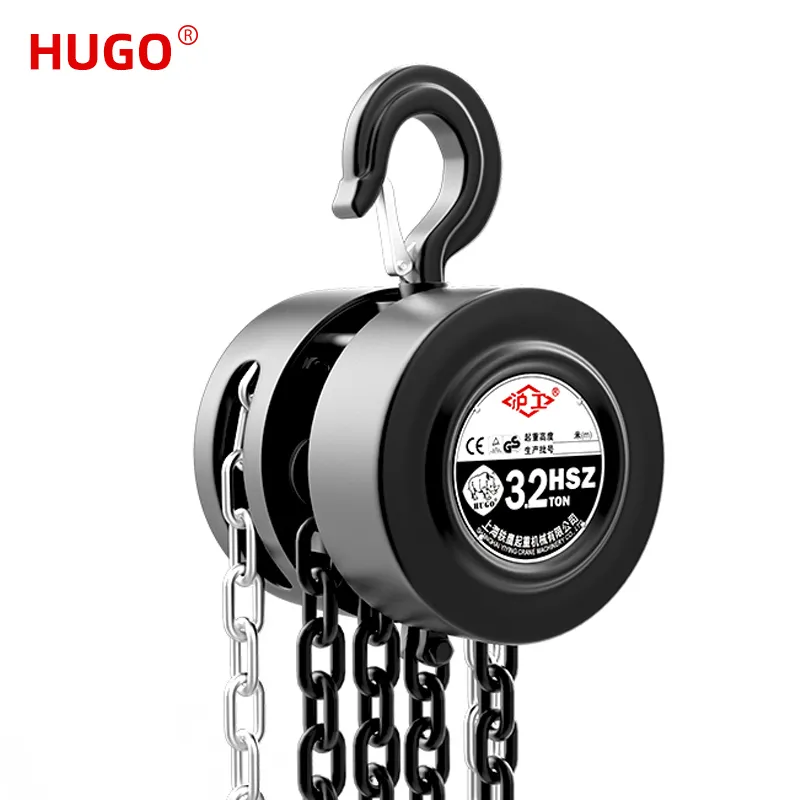
- English
- Español
- Português
- русский
- Français
- 日本語
- Deutsch
- tiếng Việt
- Italiano
- Nederlands
- ภาษาไทย
- Polski
- 한국어
- Svenska
- magyar
- Malay
- বাংলা ভাষার
- Dansk
- Suomi
- हिन्दी
- Pilipino
- Türkçe
- Gaeilge
- العربية
- Indonesia
- Norsk
- تمل
- český
- ελληνικά
- український
- Javanese
- فارسی
- தமிழ்
- తెలుగు
- नेपाली
- Burmese
- български
- ລາວ
- Latine
- Қазақша
- Euskal
- Azərbaycan
- Slovenský jazyk
- Македонски
- Lietuvos
- Eesti Keel
- Română
- Slovenski
- मराठी
- Srpski језик
What are the Key Features to Look for in a Chain Hoist?
2024-09-30
A chain hoist is a versatile and powerful tool commonly used in industrial, construction, and warehouse settings to lift and move heavy loads with ease. Whether you’re working in a factory or on a job site, selecting the right chain hoist is crucial for safety, efficiency, and longevity of use. But with so many options available, what key features should you consider when choosing a chain hoist? This guide will walk you through the essential attributes to look for, helping you make an informed decision.
1. Load Capacity
The first and foremost feature to consider is the load capacity of the chain hoist. Load capacity refers to the maximum weight the hoist can safely lift. Chain hoists typically range from 0.5 tons (1,000 lbs) to over 50 tons, depending on the application.
- Determine Your Requirements: Choose a hoist that can handle the weight of your heaviest load, plus a margin of safety. Overloading a hoist can lead to equipment failure and pose significant safety hazards.
- Factor in Future Needs: Consider your potential future needs. If your work involves varying weights, it may be wise to choose a hoist with a slightly higher capacity.

2. Lift Height
Lift height, or the maximum height a load can be lifted, is another critical factor. It is especially important in environments where loads need to be lifted to significant heights, such as warehouses or construction sites.
- Know Your Work Environment: Measure the height of your workspace to ensure the hoist can accommodate it. Standard lift heights vary from 10 to 20 feet, but custom configurations can offer more height if needed.
- Adjustability: Some hoists allow for the adjustment of chain lengths, providing more flexibility in varied work settings.
3. Type of Operation: Manual, Electric, or Air-Powered
Chain hoists can be operated manually, electrically, or pneumatically (air-powered). The choice between these types depends on the nature of the lifting tasks and the work environment.
- Manual Hoists: Operated by hand, these hoists are suitable for lighter loads and environments where power sources are limited. They offer simplicity and lower costs.
- Electric Hoists: Ideal for frequent use and heavier loads. Electric hoists provide faster lifting speeds and reduce the physical strain on operators.
- Air-Powered Hoists: Suitable for environments with hazardous conditions where electrical sparks could pose risks. They are also useful in heavy-duty industrial applications with continuous lifting needs.
4. Lifting Speed
The speed at which a hoist lifts a load is crucial for productivity and safety. Lifting speed varies across different types of hoists and their configurations.
- Adjustable Speed Control: Some electric or air-powered hoists come with adjustable speed settings, allowing for precise control over lifting operations.
- Match the Speed to the Task: Faster speeds are ideal for high-cycle operations, while slower speeds offer more control for precise placement of heavy items.
5. Chain Material and Durability
The strength and durability of the chain are fundamental to the safety and longevity of the hoist. Chains made of high-grade alloy steel are the industry standard because they offer superior strength, wear resistance, and durability.
- Look for Grade and Coating: Check the grade of the chain (e.g., Grade 80 or 100) and whether it has a corrosion-resistant coating to protect it from rust and environmental damage.
- Inspect Chain Links Regularly: Chains should be inspected regularly for wear, elongation, or damage. Choose a hoist with chains that are easy to replace if necessary.
6. Safety Features
Safety should always be a top priority when selecting a chain hoist. Modern hoists come equipped with various safety features to prevent accidents and equipment damage.
- Mechanical Load Brakes: A mechanical load brake system helps control the descent of heavy loads, preventing them from free-falling if power is lost or manual control slips.
- Overload Protection: This feature prevents the hoist from operating if the load exceeds its rated capacity, protecting both the equipment and the operator.
- Automatic Upper and Lower Limit Switches: Limit switches automatically stop the hoist when the load reaches its upper or lower limit, preventing chain overrun and damage to the hoist.
7. Portability and Weight
If your work involves moving the hoist from one location to another, the portability and weight of the hoist are key considerations.
- Compact and Lightweight Options: Choose a compact and lightweight model if portability is a priority. Many manual chain hoists are designed for ease of transport and quick setup.
- Mounting Options: Check for mounting options such as hooks or trolleys that facilitate easy installation and movement along beams or gantries.
8. Ease of Maintenance
A chain hoist should be easy to maintain to ensure its long-term performance and safety.
- Accessible Components: Choose a hoist with accessible components for inspection, lubrication, and replacement of parts.
- Availability of Spare Parts: Opt for brands with readily available spare parts and a good track record of customer service.
9. Environmental Compatibility
Consider the environmental conditions where the hoist will be used. Extreme temperatures, moisture, dust, or corrosive environments can impact the performance and lifespan of the hoist.
- Weather-Resistant Coating: Look for hoists with weather-resistant coatings and materials if you’re working outdoors or in harsh conditions.
- Explosion-Proof Models: In environments with flammable materials, use explosion-proof or spark-resistant models to ensure safety.
10. Warranty and Brand Reputation
Lastly, consider the warranty and reputation of the brand. A reputable manufacturer typically offers better warranties and customer support, ensuring you get reliable performance and service for your investment.
- Check Reviews and Ratings: Look for reviews and ratings from other users to gauge the reliability and performance of the hoist.
- Warranty Coverage: Ensure the warranty covers essential components like the motor, chain, and brake system.
Conclusion
Choosing the right chain hoist involves evaluating multiple features such as load capacity, lifting height, type of operation, and safety features. By understanding your specific lifting requirements and the working environment, you can select a hoist that not only enhances productivity but also ensures safety and reliability in every lift. Take the time to assess each of these features, and you’ll be well on your way to selecting a high-quality chain hoist that meets your needs for years to come.
As a professional China Chain Hoist manufacturers and suppliers, we provide customers with comprehensive project management services.If you are interested, please contact SALES3@YIYINGGROUP.COM.


